We design LED based UV curing systems which offer superior control and output stability, while providing reduced downtime and a lower cost of ownership.
LED UV SYSTEMS
Learn more about how LED UV curing systems from OXYTECH SYSTEMS™ can improve your productivity and reduce downtime for scheduled maintenance.
- Air or water cooled options for consistent cooling
- No warm up time or cool down time
- Enhanced substrate versatility
- High watt per cm² wavelength output options at 365, 385, 395, 405 nm
- High output LED chip technology with dramatic energy savings and, payback potential
- Curing is VOC free with no ozone generated
- Significantly smaller footprint than conventional UV
- More energy efficient than conventional UV systems
- Sheetfed, Web, Flexo, Label, Packaging, Corrugated, Gravure, and Industrial Applications
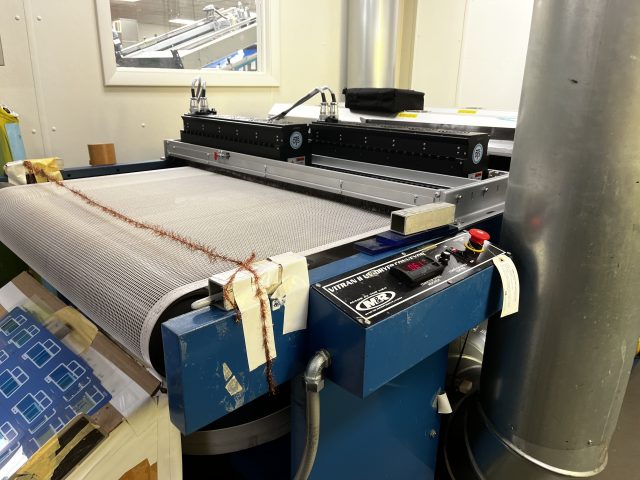


LED technology is fundamentally a more compact technology than traditional ultraviolet lamps enabling much more flexible form factors. The compactness of LED systems, along with the fact that shuttering and air extraction systems are no longer necessary results in a much smaller footprint for the ultraviolet curing system.
There are 4 different LED UV emitters. They generate wavelengths from light emitting diodes (LED) at specific light spectrums of 365, 385, 395 and 405nm. This way people can choose the exact LED based on the spectrum they need for their ink or coating. The reason LED UV emitters are so energy efficient is that they emit only the exact spectrum needed and not any of the unused wavelengths. This saves electricity.
Mercury vapor lamps produce all wavelengths between 260nm and 440nm (nanometers) with various peaks. Some of the energy from a mercury vapor system will be in the infrared spectrum.
LED UV inks and coatings should be tuned to the specific wave length that an LED curing system is producing while conventional UV inks and coating are not specific because mercury vapor lamps cover all of the wavelengths.
An LED based system can offer superior control and stability of output while providing reduced downtime, long lifetimes, and low costs of ownership.
Learn more about how LED UV curing systems from OXYTECH SYSTEMS™ can improve your productivity and reduce downtime for scheduled maintenance.

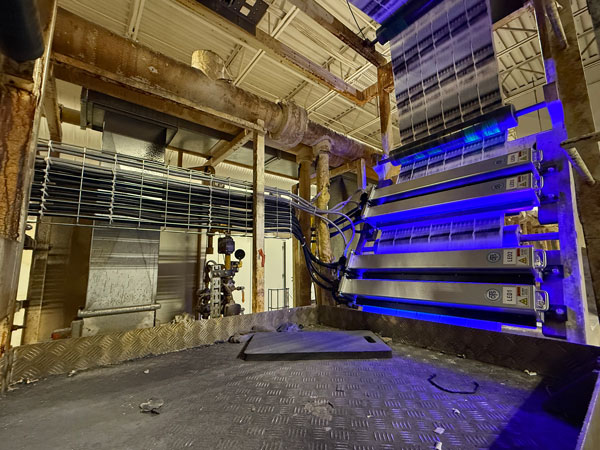
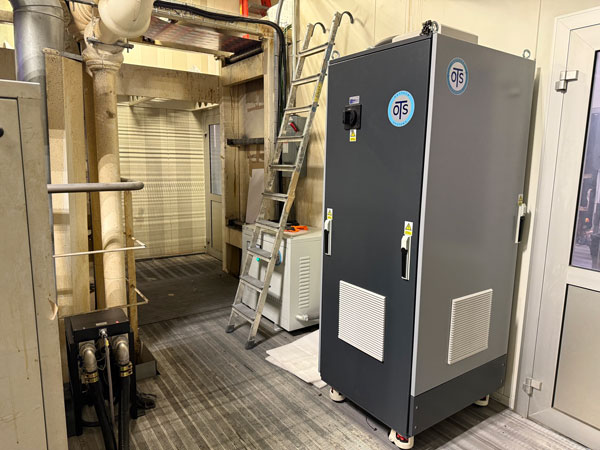
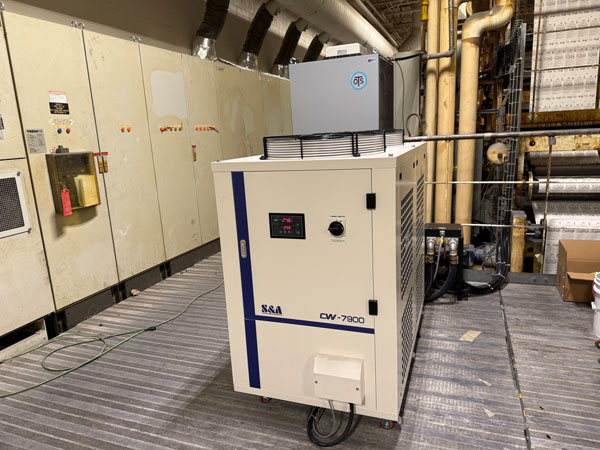
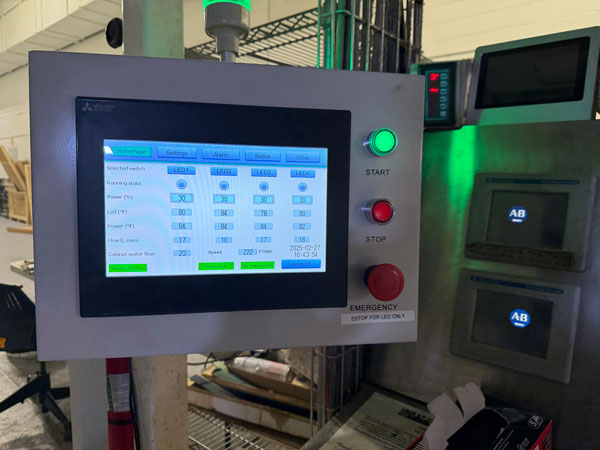
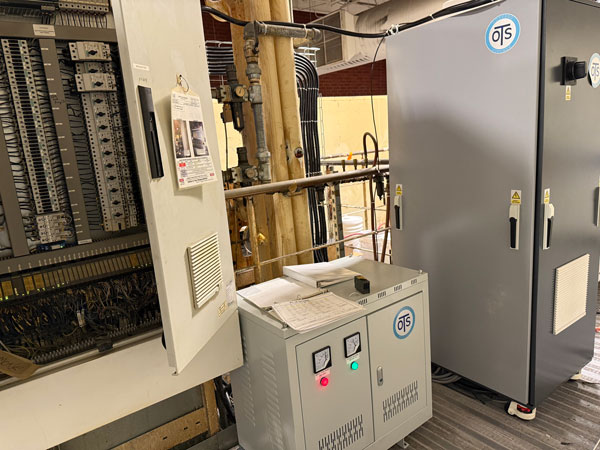
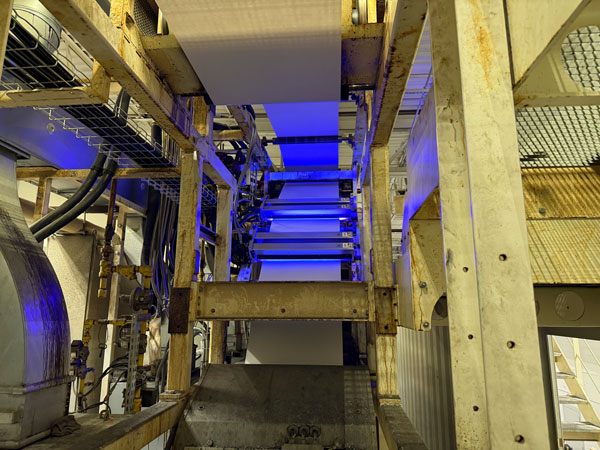
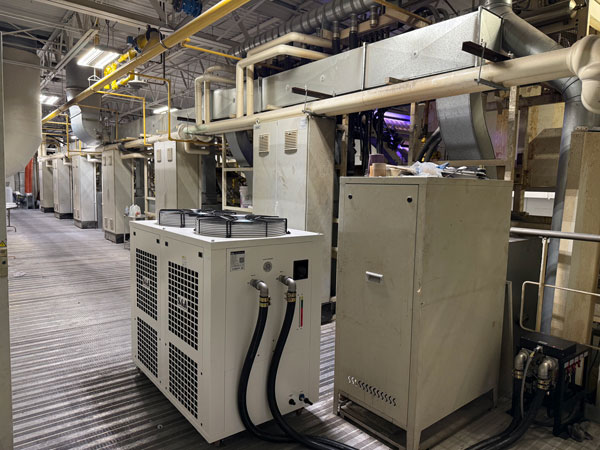
LED UV Curing: A Comprehensive Overview with Oxytech Systems
LED UV curing revolutionizes the way industries cure inks, coatings, and adhesives. This cutting-edge technology employs ultraviolet (UV) light emitted by light-emitting diodes (LEDs) to initiate rapid photochemical reactions, transforming liquid materials into solid, durable forms. Manufacturers across various sectors, including printing, electronics, and automotive, adopt LED UV curing to enhance efficiency, reduce energy costs, and improve product quality. Oxytech Systems, a U.S.-based manufacturer with over 70 years of experience in the printing field, provides innovative LED UV curing solutions that cater to the graphic arts and corrugated industries, delivering reliable and high-performance equipment. This article explores the mechanics, benefits, applications, and advancements of LED UV curing, emphasizing the transformative impact of Oxytech Systems’ technology on modern manufacturing.
How LED UV Curing Works
Oxytech Systems’ LED UV curing systems generate specific wavelengths of UV light, typically between 365, 385 and 405 nanometers, to trigger curing. The process begins when LEDs emit UV light onto a photosensitive material containing photoinitiators. These photoinitiators absorb the UV energy, initiating a chain reaction that cross-links polymers, hardening the material within seconds. Unlike traditional UV curing, which relies on mercury vapor arc lamps, Oxytech Systems’ LED UV systems deliver precise, controlled light output, ensuring consistent curing results.
The technology operates efficiently, producing minimal heat during the process. This low thermal output protects heat-sensitive substrates, such as thin films or plastics, from damage. Oxytech Systems equips its curing systems with advanced controls, such as Mitsubishi PLCs with touch-screen interfaces, allowing manufacturers to adjust the intensity and wavelength of the LED light to suit specific materials, optimizing curing performance for diverse applications. The instant on/off capability of Oxytech Systems’ LEDs eliminates warm-up times, streamlining production workflows.
Advantages of LED UV Curing
Oxytech Systems’ LED UV curing offers numerous benefits over conventional curing methods. First, it significantly reduces energy consumption. Their LED systems convert a higher percentage of electrical energy into UV light, minimizing waste compared to mercury lamps, which lose energy as heat. This efficiency lowers operational costs and supports sustainable manufacturing practices.
Second, Oxytech Systems’ LED UV curing enhances production speed. The rapid curing process, often completed in milliseconds, allows manufacturers to accelerate throughput without compromising quality. This speed proves critical in high-volume industries like printing, where quick turnaround times drive competitiveness, as demonstrated by Oxytech Systems’ solutions for sheetfed and web presses.
Third, the technology improves workplace safety. Unlike mercury lamps, Oxytech Systems’ LED UV systems contain no hazardous materials, eliminating the risk of mercury exposure. Additionally, their low heat output reduces the chance of burns or fire hazards, creating safer working environments.
Finally, Oxytech Systems’ LED UV curing ensures superior product quality. The precise control over light intensity and wavelength produces uniform curing, reducing defects like uneven coatings or incomplete hardening. This reliability enhances the durability and performance of finished products, from printed graphics to electronic components.
Applications of LED UV Curing
Oxytech Systems’ LED UV curing finds widespread use across industries, transforming manufacturing processes with its versatility. In the printing industry, it cures inks and coatings on paper, plastic, and metal substrates, delivering vibrant, scratch-resistant graphics. Digital, flexographic, and screen printers rely on Oxytech Systems’ LED UV systems to produce high-quality labels, packaging, and signage with rapid drying times, particularly for sheetfed and web offset printing applications.
In electronics manufacturing, Oxytech Systems’ LED UV curing secures adhesives and coatings for circuit boards, displays, and sensors. The technology’s low heat output protects delicate components, ensuring reliable performance in devices like smartphones and medical equipment. Manufacturers apply UV-curable adhesives to bond parts with precision, enhancing product longevity.
The automotive industry leverages Oxytech Systems’ LED UV curing for coatings on dashboards, trim, and exterior parts. The process delivers durable, glossy finishes resistant to scratches and weathering, as seen in their handheld UV systems designed for automotive applications. Similarly, in woodworking, Oxytech Systems’ LED UV curing hardens coatings on furniture and flooring, providing robust protection against wear and tear.
Medical device manufacturing also benefits from Oxytech Systems’ LED UV curing. The technology cures biocompatible adhesives and coatings for catheters, syringes, and implants, ensuring sterility and durability. Its precision supports the production of intricate devices that meet stringent regulatory standards.
Additionally, Oxytech Systems’ portable UV curing systems for web presses offer flexibility, allowing seamless integration across various press configurations. These systems increase production speeds, improve gloss levels, and reduce downtime for maintenance, making them ideal for high-speed printing environments.
Technological Advancements
Oxytech Systems drives innovation in LED UV curing with high-power LED arrays that deliver greater light intensity, enabling faster curing for thicker coatings and complex materials. These advancements broaden the range of compatible substrates, including highly reflective or absorbent surfaces.
Oxytech Systems’ improved cooling systems enhance LED longevity, ensuring consistent performance over extended periods. Air- and water-cooled designs dissipate heat efficiently, preventing overheating and maintaining optimal output. These systems also reduce maintenance costs, as Oxytech Systems’ LEDs boast lifespans of up to 20,000 hours, far surpassing traditional lamps.
Software integration further refines Oxytech Systems’ LED UV curing. Their advanced control systems, equipped with Mitsubishi PLCs and touch-screen interfaces, allow manufacturers to monitor and adjust curing parameters in real time, optimizing performance for specific applications. These systems integrate seamlessly with automated production lines, enabling precise synchronization and reducing downtime.
Researchers at Oxytech Systems also explore new photoinitiators tailored for LED wavelengths. These compounds enhance curing efficiency, enabling the use of lower light intensities while maintaining high-quality results. This development reduces energy demands and expands the range of curable materials, including eco-friendly, low-VOC formulations.
Challenges and Solutions
Despite its advantages, LED UV curing with Oxytech Systems faces challenges. The initial investment in their LED systems can be higher than traditional setups, deterring smaller manufacturers. However, the long-term savings from reduced energy use, lower maintenance, and increased productivity often offset these costs.
Another challenge involves curing materials with high opacity or thickness, which may resist UV penetration. Oxytech Systems addresses this by using higher-intensity LEDs or multi-wavelength systems that target different photoinitiators, ensuring thorough curing. Ongoing research into advanced formulations also improves compatibility with challenging substrates.
Regulatory compliance presents another hurdle, particularly in industries like medical devices or food packaging. Oxytech Systems’ LED UV curing systems meet strict standards by using non-toxic materials and ensuring consistent curing to avoid contamination. The company works closely with regulatory bodies to certify their processes, ensuring safety and reliability.
Environmental Impact
Oxytech Systems’ LED UV curing aligns with global sustainability goals. Its energy efficiency reduces carbon footprints, supporting eco-conscious manufacturing. The absence of mercury eliminates hazardous waste, simplifying disposal and reducing environmental risks. Additionally, Oxytech Systems’ LED UV systems enable the use of solvent-free, UV-curable formulations, minimizing volatile organic compound (VOC) emissions.
The technology also supports recycling efforts. UV-cured coatings often enhance the durability of recyclable materials, extending their lifecycle. Oxytech Systems increasingly adopts bio-based photoinitiators and resins, further reducing environmental impact. These advancements position their LED UV curing as a cornerstone of green manufacturing.
Future Prospects
The future of LED UV curing with Oxytech Systems looks promising as industries prioritize efficiency and sustainability. Emerging applications, such as 3D printing and flexible electronics, leverage Oxytech Systems’ LED UV curing for rapid prototyping and production. The technology’s ability to cure intricate designs with precision makes it ideal for additive manufacturing, where complex geometries demand reliable hardening.
Global demand for sustainable manufacturing will further propel Oxytech Systems’ LED UV curing. Governments and industries push for greener processes, and Oxytech Systems’ LED systems meet these expectations with their low energy use and eco-friendly materials. As costs decline and performance improves, the technology will become accessible to smaller businesses, broadening its impact.
Conclusion
Oxytech Systems’ LED UV curing transforms manufacturing by delivering speed, efficiency, and quality. Its ability to rapidly cure inks, coatings, and adhesives with minimal energy and environmental impact makes it a game-changer across industries. From printing vibrant graphics to securing delicate electronics, Oxytech Systems’ LED UV curing meets diverse needs with precision and reliability. Ongoing advancements in LED technology, photoinitiators, and system integration will further expand its applications, solidifying Oxytech Systems’ role in modern production. As industries embrace sustainability and innovation, Oxytech Systems’ LED UV curing stands at the forefront, driving progress and redefining manufacturing standards.
Frequently Asked Questions
What is LED UV curing?
LED UV curing uses ultraviolet light from light‑emitting diodes to initiate rapid photochemical reactions that harden inks, coatings, and adhesives within seconds. Oxytech Systems’ solutions deliver precise, controlled curing for high‑quality, durable results.
How does Oxytech’s LED UV curing work?
Oxytech’s systems emit UV light at specific wavelengths (typically 365, 385, or 405 nm) to activate photoinitiators in the material. This triggers polymer cross‑linking, solidifying the material quickly with minimal heat, protecting heat‑sensitive substrates.
What are the advantages over traditional UV curing?
Benefits include lower energy consumption, faster production speeds, improved workplace safety (no mercury), minimal heat output, and superior product quality through precise control of light intensity and wavelength.
Which industries use Oxytech’s LED UV curing?
Industries include printing (labels, packaging, signage), electronics (circuit boards, displays), automotive (coatings on parts), woodworking (furniture, flooring), and medical devices (biocompatible adhesives and coatings).
What applications are common in printing?
Oxytech’s LED UV curing is used in digital, flexographic, screen, sheetfed, and web offset printing to produce vibrant, scratch‑resistant graphics on paper, plastic, metal, and other substrates.
What technological advancements has Oxytech introduced?
Innovations include high‑power LED arrays for faster curing, advanced cooling systems for longer LED life, Mitsubishi PLC controls with touch‑screen interfaces, and research into new photoinitiators for greater efficiency and material compatibility.
What challenges does LED UV curing face and how are they addressed?
Challenges include higher initial costs and curing opaque or thick materials. Oxytech addresses these with high‑intensity or multi‑wavelength LEDs, advanced formulations, and designs that deliver long‑term cost savings and performance.
How does LED UV curing support sustainability?
It reduces energy use, eliminates mercury, supports solvent‑free low‑VOC formulations, and enables durable coatings that extend product life. Oxytech also explores bio‑based materials to further reduce environmental impact.
What is the future outlook for Oxytech’s LED UV curing?
Growth is expected in areas like 3D printing, flexible electronics, and sustainable manufacturing. As costs drop and performance improves, the technology will become more accessible to a wider range of businesses.
How can I contact Oxytech Systems?
Contact Oxytech Systems at 852 Commerce Pkwy, Carpentersville, IL 60110. Phone: (847) 888‑8611, Fax: (847) 888‑8696, Email: info@oxytechsystems.com.

